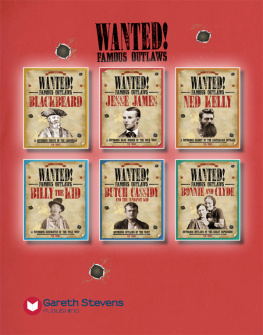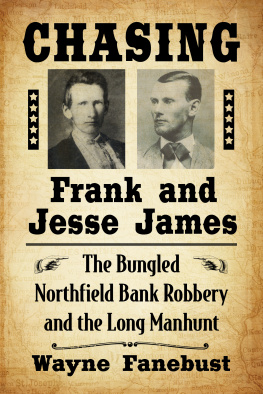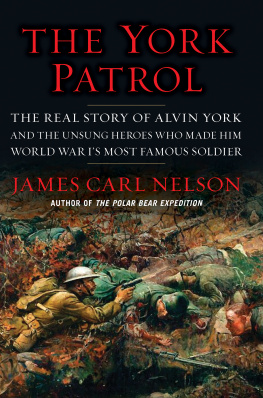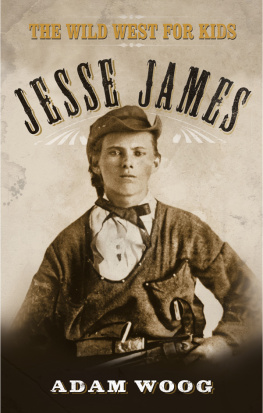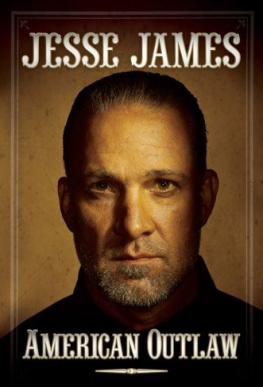
This edition is published by PICKLE PARTNERS PUBLISHINGwww.pp-publishing.com
To join our mailing list for new titles or for issues with our bookspicklepublishing@gmail.com
Or on Facebook
Text originally published in 1961 under the same title.
Pickle Partners Publishing 2016, all rights reserved. No part of this publication may be reproduced, stored in a retrieval system or transmitted by any means, electrical, mechanical or otherwise without the written permission of the copyright holder.
Publishers Note
Although in most cases we have retained the Authors original spelling and grammar to authentically reproduce the work of the Author and the original intent of such material, some additional notes and clarifications have been added for the modern readers benefit.
We have also made every effort to include all maps and illustrations of the original edition the limitations of formatting do not allow of including larger maps, we will upload as many of these maps as possible.
THE DAY JESSE JAMES WAS KILLED
BY
CARL W. BREIHAN
TABLE OF CONTENTS
Contents
TABLE OF CONTENTS
DEDICATION
Dedicated to
Gregory Gundlach
and
Ken and Les Strobl
ACKNOWLEDGMENTS
IN GRATEFUL APPRECIATION TO THOSE MANY FINE people who so willingly and ably assisted me in the compilation of this work. Their helpfulness and kindness took many a weary load from my shoulders, and enabled me to locate data that otherwise might have remained hidden years longer.
My thanks to W. E. Littler, editor Adair, Iowa , News ; Lewis Ketring, Jr., Lakewood, California; Herb Glass, Bullville, New York; Glenn Clairmonte, New York, whose editorial assistance has been invaluable; Harry Younger Hall, nephew of Cole Younger, Lees Summit, Missouri; Charles Kemper, historian, Independence, Missouri; Dr. Frank OKelley, brother of the man who killed Bob Ford, Patton, Missouri; O. C. Sheley, Independence, Missouri; Miles Standish, Kansas City, Missouri; Henry G. Lingenfelder, Baltimore, Maryland; Ed Bartholomew, Houston, Texas; Uncle Charlie Bell, historian, Louisville, Kentucky; Elmer Sparks, Canadian, Texas; Fred Mazzulla, Denver, Colorado; Loring Campbell, Burbank, California; Wm. Morrison, historian-researcher, El Paso, Texas; and the personnel of the many museums I visited as well as the helpful folks at the National Archives in Washington.
If I missed anyone it is not intentional, please believe me. My heartfelt thanks to all those who assisted me in this undertaking.
FOREWORD
THE NAME OF JESSE JAMES HAS ALWAYS STIRRED THE imagination of young and old alike. Visions of daring gunplay, while yelling bandits race down upon some defenseless bank or stagecoach, rise before our eyes. But we must realize that no band in history came to a more ignominious end than the James gang of Missouri. It seems that all their activities led them straight to that day in Northfield, Minnesota, when the gang as a power died.
And singly, too, all of them met disaster. Only Frank James survived his punishment. Clell Miller and Bill Chadwell died in the streets of Northfield. Sam Wells (alias Charlie Pitts) was killed in the swamps when he and the Youngers tried to fight off a posse. The Youngers were later imprisoned at Stillwater, Minnesota. Tucker Bassham also served a term in the penitentiary. Ed Miller was killed by Jesse James and left lying in the road in Saline County, Missouri. Clarence Hite was sentenced to twenty-five years in prison and, though pardoned, died of consumption shortly afterward. Bill Ryan, sentenced to the Missouri penitentiary for twenty-five years, was pardoned by Governor Morehouse after seven years and then was killed in an accident. Wood Hite was killed by Bob Ford and Dick Liddil. Dick Liddil gave himself up and became a witness for the state, then died in Cincinnati, Ohio, and was buried at Independence, Missouri. Jesse James was killed by Bob and Charley Ford at St. Joseph, Missouri. Charley Ford, borne down by disease and remorse, committed suicide in a weed patch outside Richmond, Missouri. Bob Ford was killed by Edward OKelley at Jimtown, Colorado.
The simple truth is that these outlaws committed holdups and murders in order to get money, not for revenge upon Northern men for mistreatment received during the Civil War as they claimed. With possibly two exceptions the banks they robbed during their fifteen-year career belonged to Southern men and were located in Missouri, Kentucky, and Virginia. Most of the people killed during bank robberies were Southerners.
The bank was eventually broken by Southerners, ex-Confederates who felt the stigma of the crimes and pursued the members of the James gang until they were destroyed. Although the Northerners were strongly opposed to the Missouri bandits, they seemed to think it was the business of the Southerners to put a stop to their activities. Chiefly responsible for the outcome were Captain M. M. Langhorne, deputy county marshal, ex-Confederate; H. H. Craig, police commissioner born in Kentucky; Cornelius Murphy, county marshal born in Virginia; Colonel J. E. Payne, ex-Confederate; W. G. Keshlaer, deputy marshal, whose brother had been killed while serving in the Confederate Army; James Goodwin, ex-Confederate on the staff of General Fitzhugh Lee; James R. Timberlake, sheriff of Clay County, ex-Confederate; Major E. A. Hickman, who lost an arm while in the Confederate Army; William Z. Hickman, son of Major Hickman; and Amazon Hays, deputy county marshal, brother of Colonel Upton Hays of the Confederate Army.
The years following the death of Jesse James brought forth eleven impostors who claimed the dubious fame of being none other than the assassinated outlaw. The most noted of the eleven was the last, J. Frank Dalton, who appeared in Lawton, Oklahoma, as late as 1949. The author spent three years investigating Dalton and exposing him. Sometimes the old codger presented a pitiful sight, becoming entangled in his own web of facts and myths about the Missouri bandit, and it seemed that his exploiters were more to blame than he was.
According to the newspapers, the old-time outlaw Al Jennings identified Dalton as the real Jesse and his story was corroborated by John Trammell, a hundred-year-old colored man. Here is a statement by Fred C. Pottorff of Parsons, Kansas:













